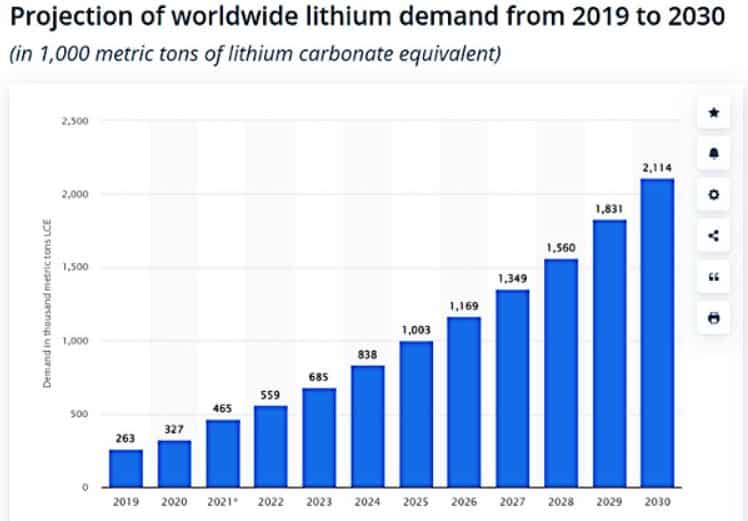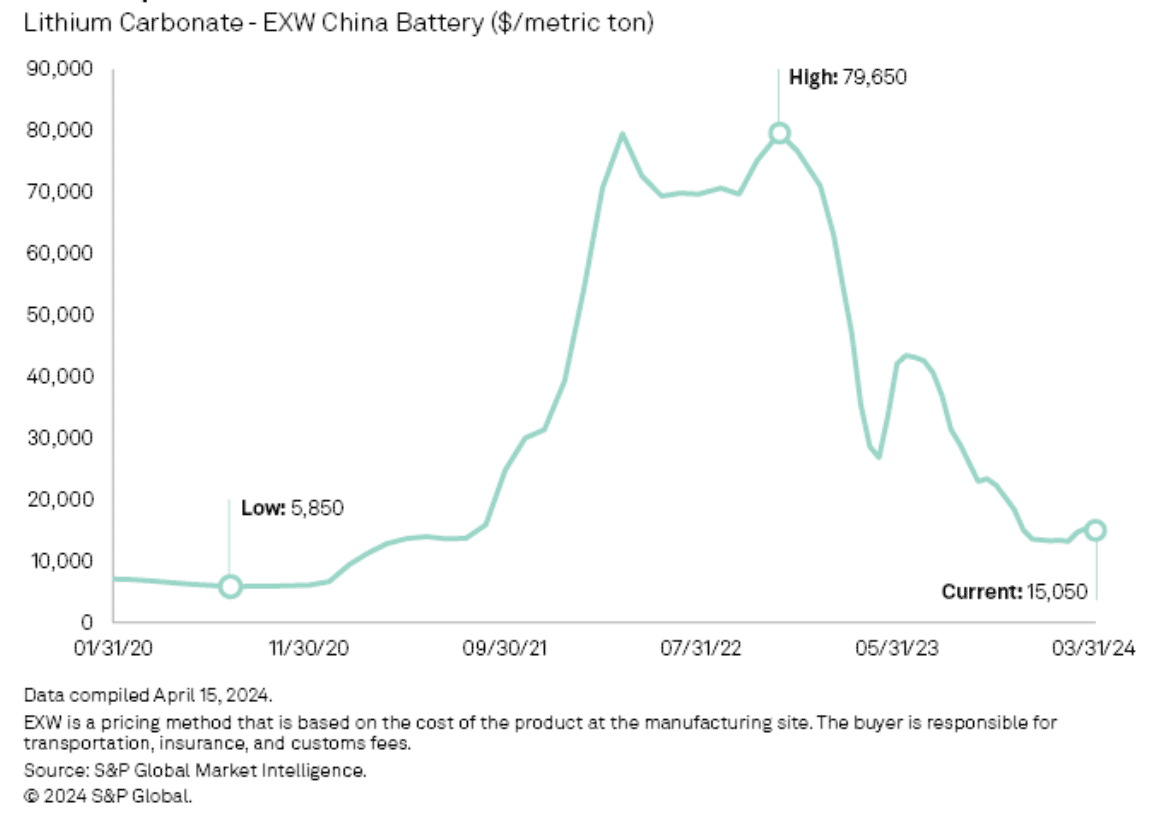Lithium, a crucial element in energy storage, holds immense significance in powering various industries. With metal prices soaring, the demand for lithium has surged over recent years.
This article delves into the intricate world of lithium dynamics, exploring the factors influencing lithium prices, recent trends, and future projections.
Check Live Lithium Prices Today Here >>
Key Factors Impacting Lithium Prices
Supply and Demand
Global production of lithium has seen a remarkable increase. In 2020, the total demand for lithium worldwide was 292 thousand metric tons of lithium carbonate equivalent.
Forecasts indicate a substantial rise to over 2.1 million metric tons by 2030, highlighting the industry’s exponential growth. This surge is primarily due to the rising battery demand for electric vehicles, which is expected to reach 3.8 million tons by 2035.

Data from the US Geological Survey shows that global lithium production reached 180,000 metric tons in 2021, with about 90% coming from just three countries.
Market Demand
Despite robust demand for lithium, growth experienced a decline year-on-year in 2023 due to economic slowdowns, particularly affecting the electric vehicle market in China. Additionally, accelerated capacity expansions led to an oversupply situation. These fluctuations underscore the delicate balance between supply and demand that significantly impacts lithium prices globally.
Economic Factors
Economic factors such as inflation rates and currency fluctuations also influence lithium prices considerably. These macroeconomic indicators directly impact production costs and subsequently affect pricing strategies within the lithium market.
Check Live Lithium Prices Today Here >>
Major Trends in Lithium Pricing
Recent Price Trends
Lithium prices have recently experienced a notable downward trajectory. As of December 18, prices plummeted by 80% within a year, and as of May 7, CIF North Asia price at $14,600/t. This decline has sparked discussions about the sustainability of this trend.
Expert insights suggest that low prices may lead to reduced supply and hesitant new investments amidst strong demand and cautious predictions.
Effect on the EV Sector
The lithium price drop has a significant impact on the EV sector. Reduced input costs present opportunities for manufacturers to recalibrate pricing strategies, potentially driving down EV costs and increasing consumer adoption rates. This shift highlights the interconnected nature of commodity pricing and its far-reaching consequences on diverse industries.
What’s the Future of Lithium Prices?
As the lithium market navigates significant fluctuations, industry experts provide valuable insights into future price trajectories. By examining expert predictions and analyzing market opportunities and challenges, stakeholders can comprehensively understand the dynamic landscape ahead.
In a recent interview, industry analyst Joe Lowry predicts that the lithium chemical supply is nearing equilibrium, with prices expected to rise by mid-2024 as inventories rebuild in key markets like China. Similarly, Andy Leyland emphasizes that the lithium market’s balance is delicate and that a projected surplus of 24,000 tonnes LCE in 2024 could quickly change due to market dynamics.
Staying informed about lithium carbonate and hydroxide prices is crucial for industry participants to capitalize on opportunities and navigate challenges. Monitoring real-time lithium prices and commodity trends provides invaluable insights for strategic positioning amidst market uncertainty.



